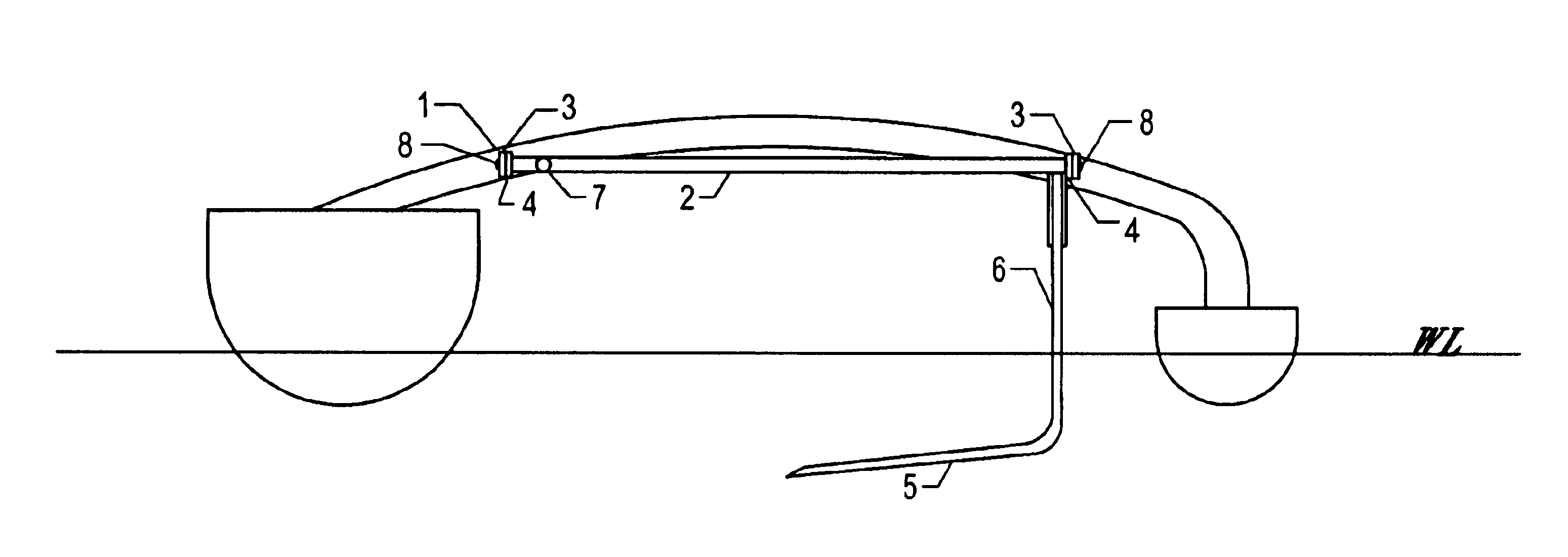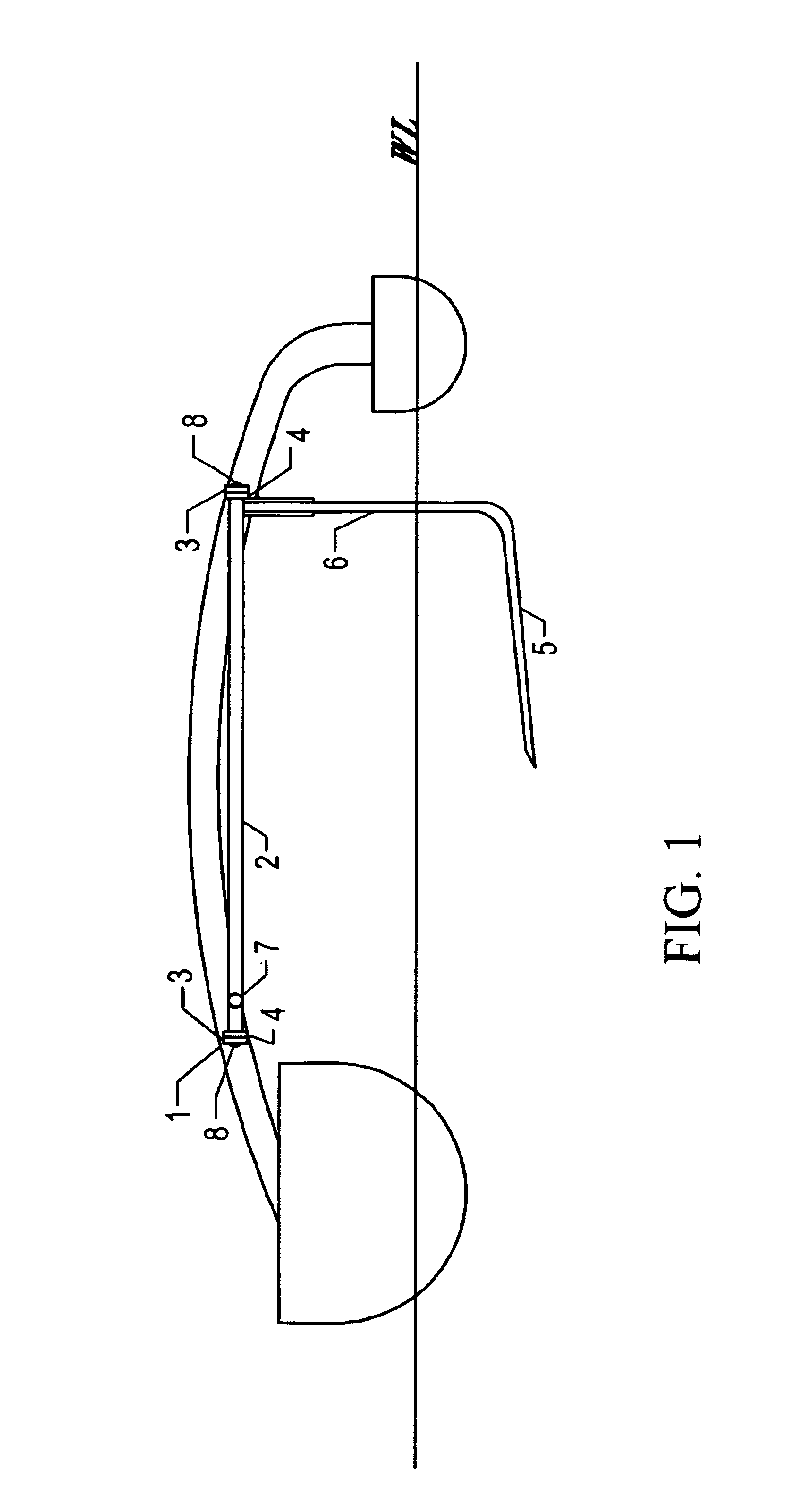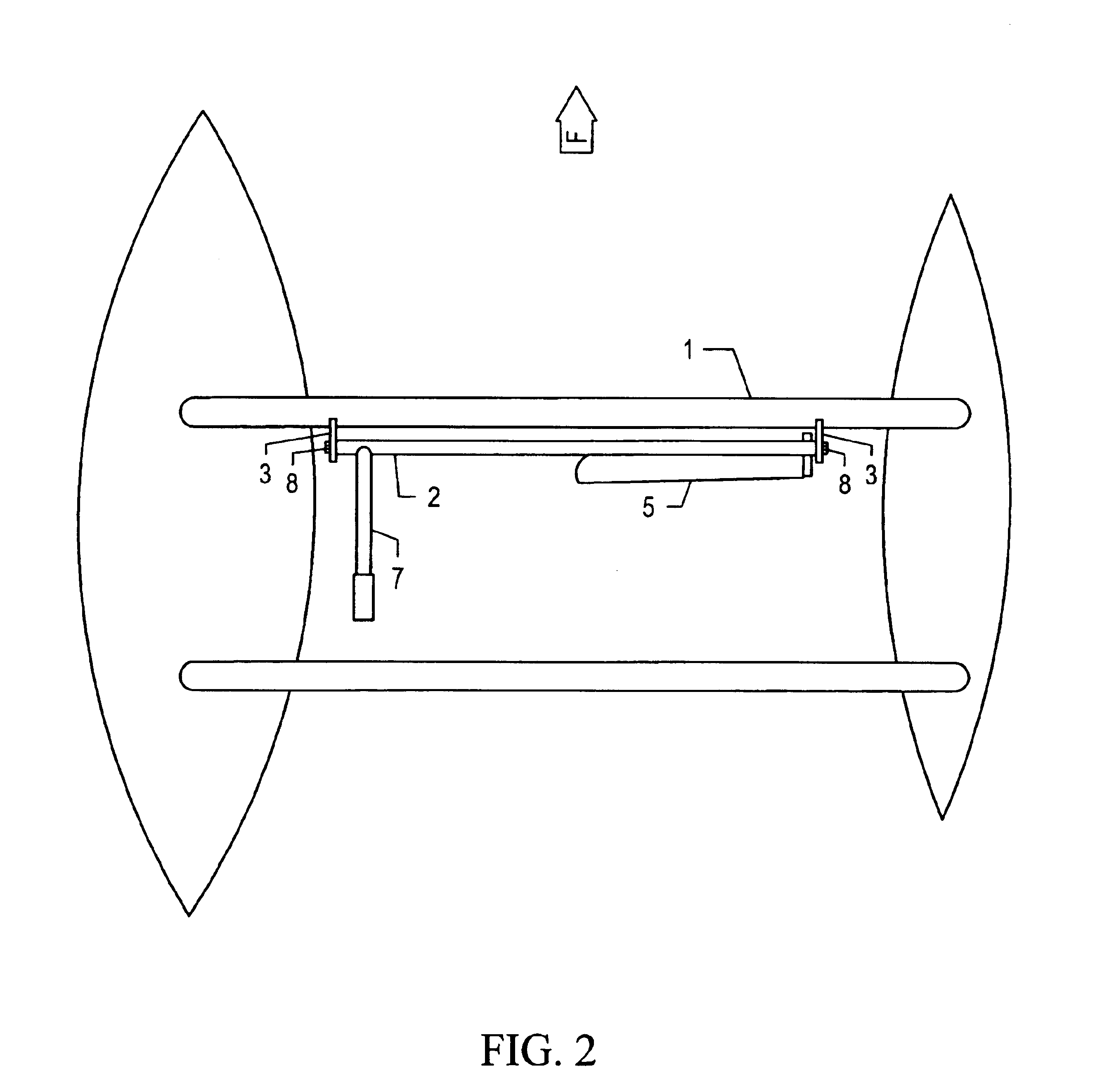Manual hydrofoil and spar truss assembly for wind powered watercraft
a technology of hydrofoil and spar truss, which is applied in the direction of foil removal, special-purpose vessels, vessel construction, etc., can solve the problems of sailboat swamping or downflood, affecting the performance of sailboats, so as to increase the performance of small boats and reduce drag. , the effect of simple and efficient means
- Summary
- Abstract
- Description
- Claims
- Application Information
AI Technical Summary
Benefits of technology
Problems solved by technology
Method used
Image
Examples
Embodiment Construction
[0045]FIG. 1 is a view of the truss assembly from aft or astern of the watercraft showing the assembly's relationship to the main hull and the ama. The vertical relationship between the iako (1) and the tubular shaft (2) is apparent from this view. The position of the tubular shaft (2) relative to the iako (1) is maintained by means of short struts (3) that are welded or otherwise fixed to the iako (1) at their upper ends and that are attached to the tubular shaft at their lower ends either by means of two machine screws (8) that pass through holes in the struts and fasten into the ends of the tubular shaft, or by means of a sleeve (4) within which the tubular shaft can rotate. The tubular shaft (2) can rotate around its long axis within this sleeve (4), with the machine screws (8) rotating in holes bored in the struts (3). This rotation causes the angle of attack of the submerged blade portion (5) of the “L” foil to change, thereby creating a downward or upward force to be exerted ...
PUM
 Login to View More
Login to View More Abstract
Description
Claims
Application Information
 Login to View More
Login to View More - R&D
- Intellectual Property
- Life Sciences
- Materials
- Tech Scout
- Unparalleled Data Quality
- Higher Quality Content
- 60% Fewer Hallucinations
Browse by: Latest US Patents, China's latest patents, Technical Efficacy Thesaurus, Application Domain, Technology Topic, Popular Technical Reports.
© 2025 PatSnap. All rights reserved.Legal|Privacy policy|Modern Slavery Act Transparency Statement|Sitemap|About US| Contact US: help@patsnap.com



